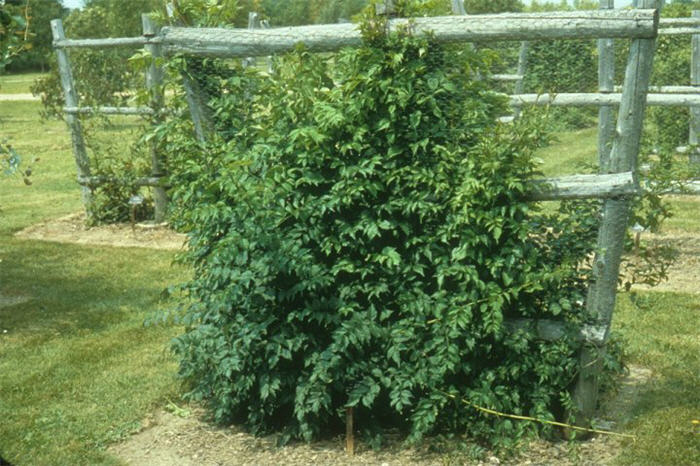| Botanical Name: Campsis radicans | |
| Common Name: Trumpet Creeper |

-
Anatomy
-
Culture
-
Design
Plant Type
Vine
Height Range
25-40', 40-60'
Flower Color
Orange, Red
Flower Season
Summer
Leaf Color
Dark Green
Bark Color
Grey
Fruit Color
Brown
Fruit Season
Fall
Sun
Full, Half, Shade
Water
Low
Growth Rate
Fast
Soil Type
Sandy, Clay, Loam, Rocky, Unparticular
Soil Condition
Average, Rich, Poor, Well-drained, Moist, Dry
Soil pH
Acid, Neutral, Basic
Adverse Factors
Invasive
Design Styles
English Cottage, Formal, Mediterranean, Seascape
Accenting Features
Showy Flowers
Seasonal Interest
Summer
Location Uses
Background, Entry, Patio, Walls / Fences
Special Uses
n/a
Attracts Wildlife
Hummingbirds
Information by: Stephanie Duer
Photographer: JJ Neilson Arboretum
Photographer: JJ Neilson Arboretum
-
Description
-
Notes
Trumpet Creeper is a deciduous, vigorous twinning and clinging vine. Dark green leaves, coarsely toothed and pinnate; late to leaf out in the spring. Orange-red trumpet-shaped flowers appear in June and throughout the summer. Flowers are followed by long, bean-like pods. It needs substantial support to get where you want it to go. Will cover a pergola, fence, or garage. The car if you don't move it frequently.
A vigorous, decidous vine. In Michael Dirr's text, "Manual of Woody Landscape Plants," he says if you can't grow this vine, give up gardening. It may take a couple of years to start flowering; also, too much nitrogen fertilizer can inhibit flowering. Prune to control growth and to keep tidy.